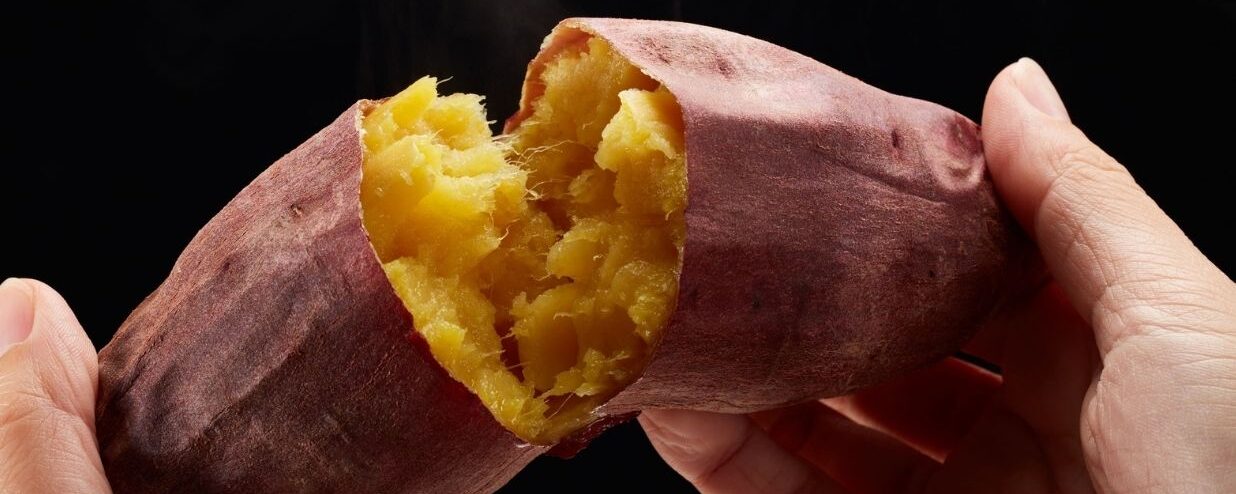Ah, autumn. The leaves are changing into brilliant reds and yellows, the air is starting to get crisp with cold, and the fluffy scarves and coats of yesteryear are emerging. It’s times like these that we start to crave those warm and familiar Japanese autumn foods. For most of us, pumpkin pie, apple cider, or s’mores come to mind. But fall flavors in Japan offer something completely different, and there is just something about these dishes that makes fall feel complete!
Japan is not excluded from these culinary desires; they even have a word for it called 食欲の秋 (shokuyoku no aki), which translates to “autumn appetite.” Some Japanese people believe that their appetite increases during this time simply because of the amount of good, hearty dishes available. And, given what autumn foods are popular in Japan, this makes a lot of sense!
So, sit down at the table, bring a healthy appetite, and ready your chopsticks; we have a mouth-watering and informative list of Japanese autumn foods to dish up!
Why Are Seasonal Foods Popular in Japan?
There are a couple of reasons why seasonal foods, such as limited autumn ingredients in Japan, are particularly loved by Japanese people. One of these is that it’s tradition! Lots of Japanese families grow up eating a particular fall dish or having some sort of fun custom associated with the food, much like eating pumpkin pie at Thanksgiving in the United States! So, eating these same dishes every year is a great way to remember the past and fall into a sense of nostalgia!
Another reason is that some of these foods simply aren’t available at other times of the year. Many plants grow only during particular seasons, and some animals mature at specific times. So, you have limited time to enjoy them before they go bad or get too old. You could think of it as another reminder of how quickly the seasons change!
And, finally, enjoying seasonal foods is simply fun! It’s an easy chance to enjoy foods and flavors that you don’t usually have, as well as to change up your regular routine. After all, what’s life without a little variety?
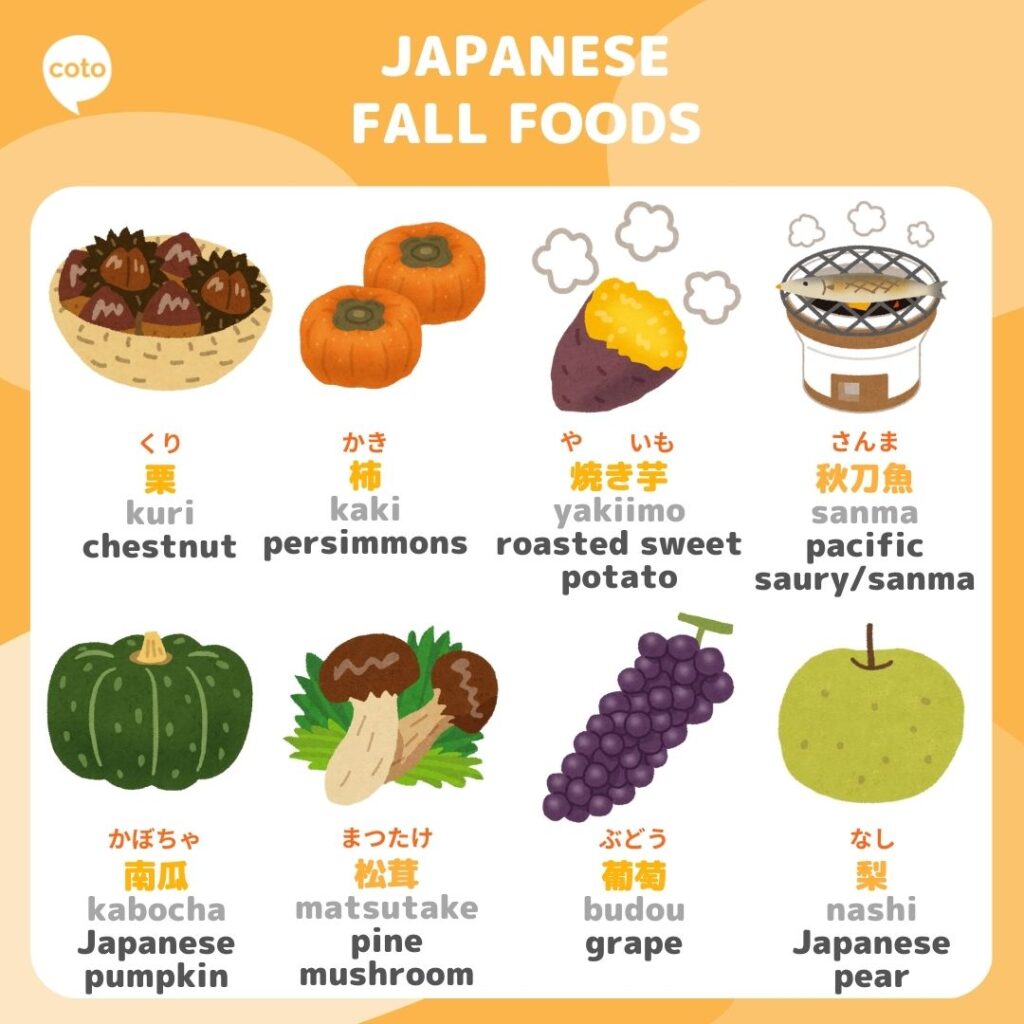
Popular Japanese Autumn Foods to Try
Alright – time for the main course! If you ask any Japanese person what their favorite autumn food in Japan is, they’ll most likely name one of the foods below. These dishes are eaten the most during the fall season, though there are a few others we’ll get to in a minute. But for now, it’s time to dig in!
1. Sweet Potatoes (Satsumaimo)
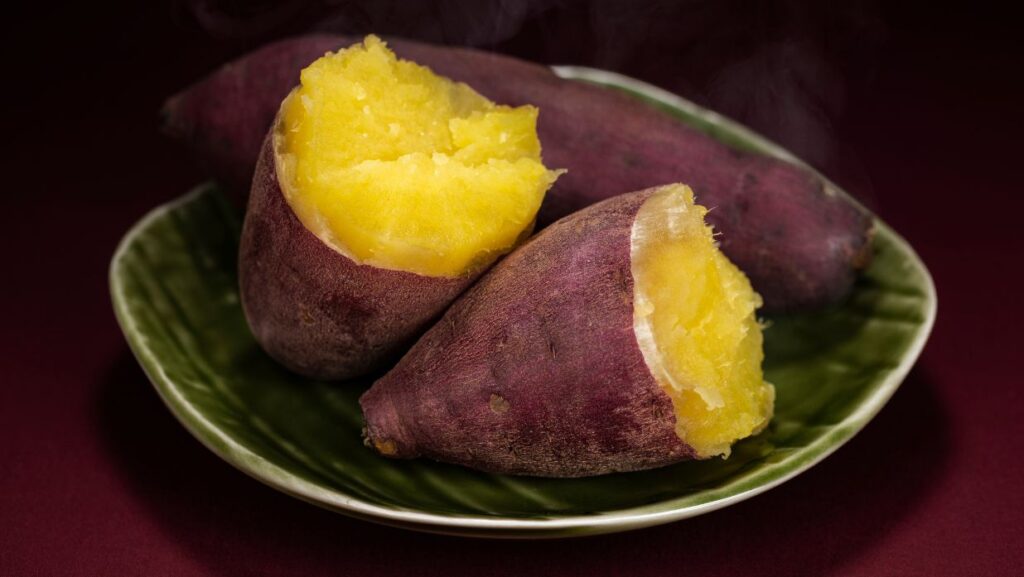
Known as satsumaimo (さつま芋), Japanese sweet potatoes are usually purple on the outside and orange on the inside. They’ve been a popular autumn food in Japan ever since they were first introduced to the country from the then-kingdom of Ryukyu (now Okinawa) in the 1600s.(However, sweet potatoes aren’t native to the area; they actually came from trade with the Philippines, which was actually acquired from China!)
In fact, they are such a popular item that many towns have dedicated yaki-imo, or roasted sweet potato trucks, that run during the fall! These trucks are often found near train stations and parks, where people eat the tasty tots plain or with some salt, butter, or pepper. You could compare this phenomenon with the traditional ice cream truck of the West, but instead of hearing upbeat music, you hear someone calling “’iiiishi-yaaaaki imoooo!” (stoooone-rooooasted potatooooes!) on repeat!
Aside from the yaki-imo trucks, you can also get roasted sweet potatoes from the popular chain Don Quijote. You can also find plenty of sweet potato-flavored items in stores, such as mochi, yokan (a thick jelly paste with red beans), milk, ice cream, and even doughnuts from the chain Mister Doughnut! Candied sweet potatoes, or daigaku-imo, are also a popular choice. No matter what you like to eat, you can probably get it with sweet potatoes!
2. Chestnuts (Kuri)
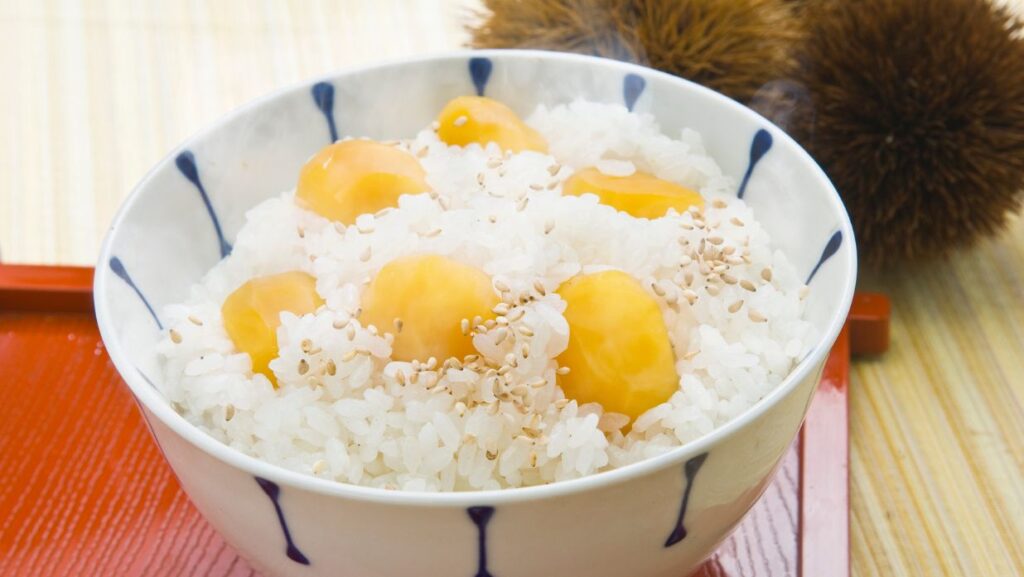
Of all the foods listed here, this one might hold the title of oldest Japanese fall food! Kuri (栗), but more commonly known by the French name マロン (marron), have been enjoyed in Japan since at least the Jomon Period (14,000 – 300 BC). People cultivated the treat as a good source of protein and used the trees they grew on as wood. Nowadays, if you see chestnut-filled rice balls appearing in stores, it’s a sign of autumn!
The nuts themselves taste nutty (surprise, surprise!), toasty, and slightly sweet. Traditionally, they are eaten roasted, though they aren’t very common in cities anymore. You are more likely to find roasted chestnuts in markets, tourist spots, in the country, or near hiking trails! A lot of people also eat them boiled with salt, soy sauce, or cooking wine. Alternatively, you can pair them with rice in the dish kuri-gohan; this dish steams the rice and chestnuts together, and when done, it’s topped with black sesame seeds.
Sounds a little too savory for you? There are also lots of sweet options! Aside from chestnut-flavored ice cream, Kit Kat, and drinks, you can also try chestnut manju or yokan. However, the most popular sweet would have to be the Mont Blanc, a French chestnut dessert that looks like a pile of spaghetti! It’s incredibly popular in Japan, and in the fall, you can buy a lot of different variations (all including chestnut, of course)!
3. Sanma Fish (Pacific Saury)
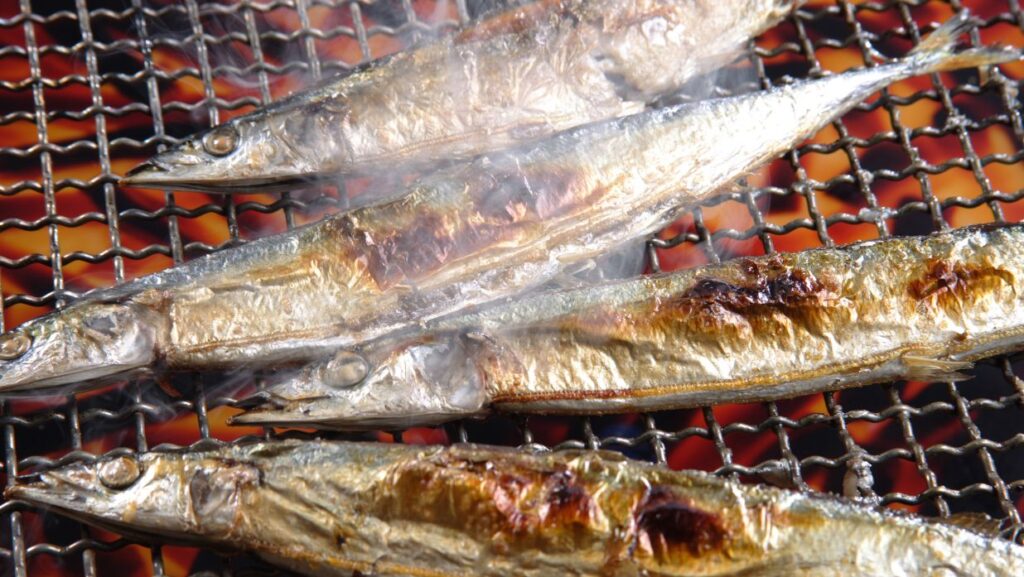
While fish might seem like an odd choice of autumn food in Japan for some readers, the sanma fish (literally written as 秋刀魚, or “autumn knife fish”), is a quintessential Japanese autumnal food. Slim and silver with a taste similar to sardines or herring, they are said to be at their tastiest during the fall (due to their high fat content). So, both supermarkets and traditional Japanese restaurants will stock up on this fish as soon as they’re caught off the coast of the Kanto area!
In both places, the sanma fish usually has all of the guts included. This is because Japanese people love the bitter taste that these insides create. They are also quite nutritious, so if you also have the guts, they are worth a try! At any rate, these fish are typically broiled whole before being seasoned with a little salt, lemon, or yuzu, and soy sauce. Many times, this dish is also served with a side of grated radish. You can also eat them grilled with salt, or shioyaki style!
4. Matsutake Mushrooms
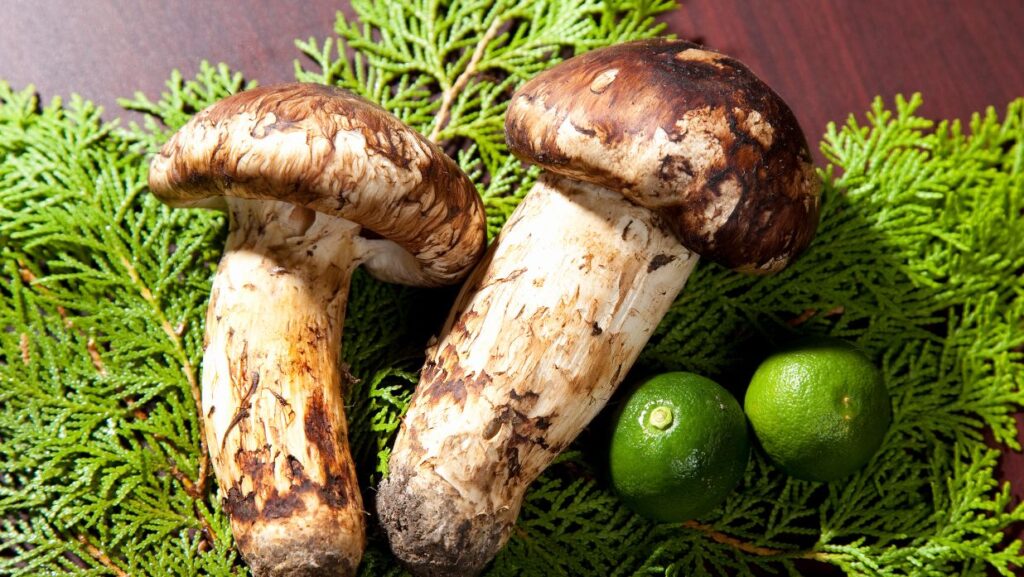
Sometimes called the “King of Autumn Foods” due to their high price tag and rich, meaty taste, 松茸 (matsutake) mushrooms are definitely something you should try if you can! This fungus is a great example of food that is seasonal just because of its growing conditions; it can only grow at the base of pine trees during the autumn season (which also gives the fungi a pine-like smell). Because of this and the resulting high demand, one mushroom can sell for over $100!
Due to their prestige, some restaurants make a whole special menu just for the matsutake. One popular way to eat them is in the dish dobin mushi, a type of mushroom soup. It has “bonito stock, vegetables, chicken or shrimp, and of course, matsutake mushrooms,” which are the reason for the dish’s “smoky, earthy taste.” It is then served in a type of Japanese teapot called the dobin. The broth (which cooks everything) is poured out the spout into bowls; from there, you simply individually pick whatever else you would like to eat directly from the dobin.
On another note, the matsutake is said to symbolize autumn’s blessings and abundance, which is kind of ironic, considering their current cost and rarity!
5. Persimmons (Kaki)
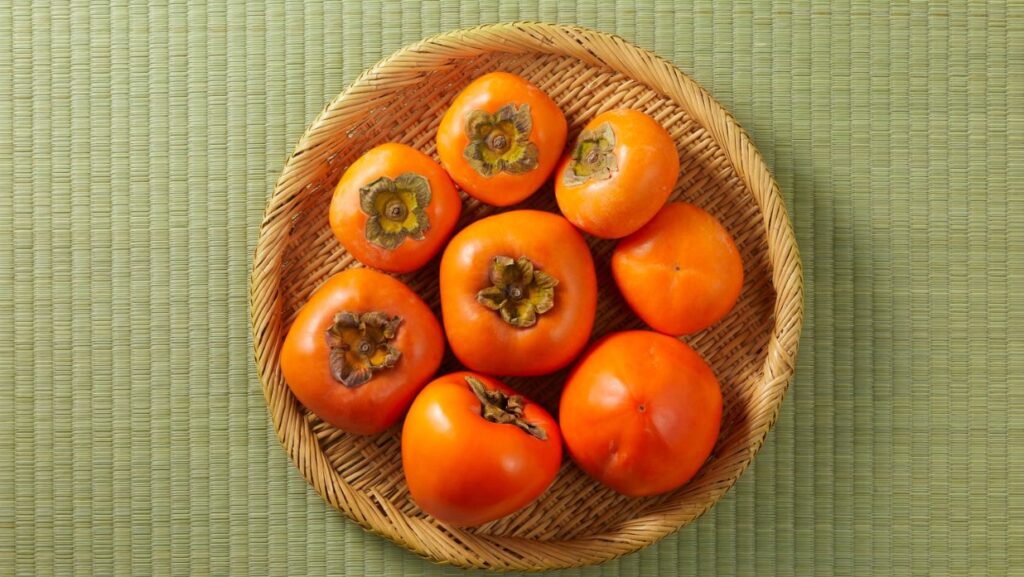
Known in Japanese as 柿 (kaki), persimmons are a popular fruit that can be eaten starting in mid-September. They are a light red color, soft, and taste slightly of honey. They look really pretty when hanging, so going to see strung persimmons is a common fall sightseeing activity!
Persimmons are usually eaten in one of two ways: raw or dried. The raw ones, usually the sweeter variety called fuyu, are commonly sold in boxes in the countryside. Fuyu persimmons are akin to apples, with a crisp, bite-worthy texture, often sliced and eaten raw. The dried ones, usually made from the more sour variety of hachiya, go through a process called hoshigaki. In this, the persimmons are peeled and strung up to dry; this allows the persimmons to shrivel and produce a natural sugar coating. Either way, the result is delicious!
Following the Japanese tendency to have very specific words, there is a lot of fun vocabulary associated with persimmons! 樽柿 (tarugaki) refers to persimmons soaking in a sake bottle, 串柿 (kushigaki) refers to dried persimmons on a skewer, and 醂す (sawasu) means to make sour persimmons more sweet!
6. Gingko Nuts (Ginnan)
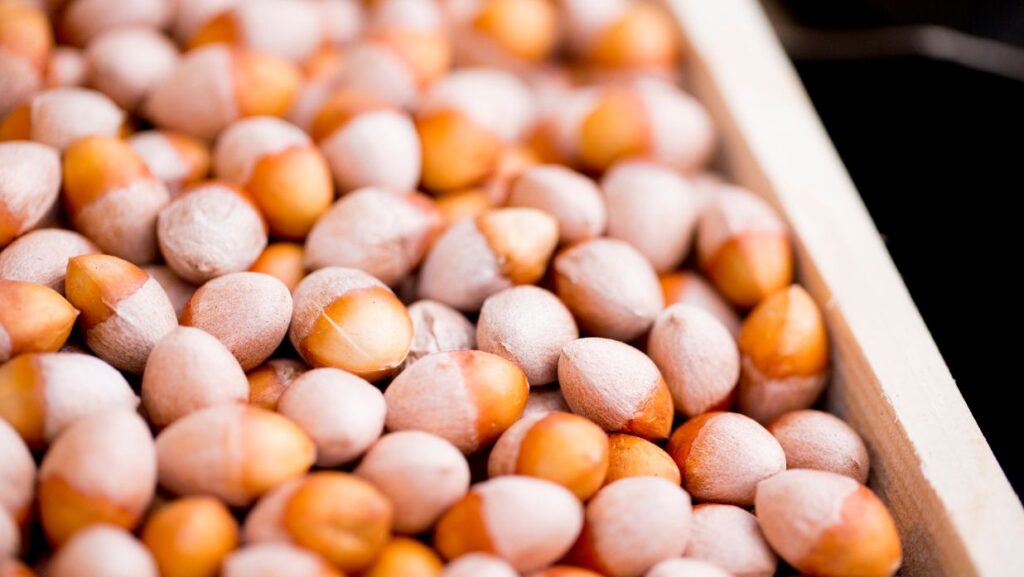
If you’re following the autumn foliage schedule in Japan, you might be familiar with ginkgo — one of the two most popular leaves admired by travelers during the season for its vivid yellow color. And yes, you can eat ginkgo nuts! After all, anything with a nutty flavor is fair game during the fall!
Gingko nuts, or ginnan (銀杏), while not as popular as other autumn foods in Japan, are still a favorite for many. Harvested when the gingko trees start to turn golden (September to November), they are usually eaten simply roasted with salt or steamed with a serving of rice.
Since gingko nuts have a sweet and nutty flavor similar to chestnuts, many people also like to put them in chawanmushi (egg custard), soups, and other combos! But, don’t try to eat these straight off the tree, as they are toxic when raw! Plus, they smell pretty bad beforehand, which might ruin your appetite for the rest of the day!
7. Pumpkins (Kabocha)
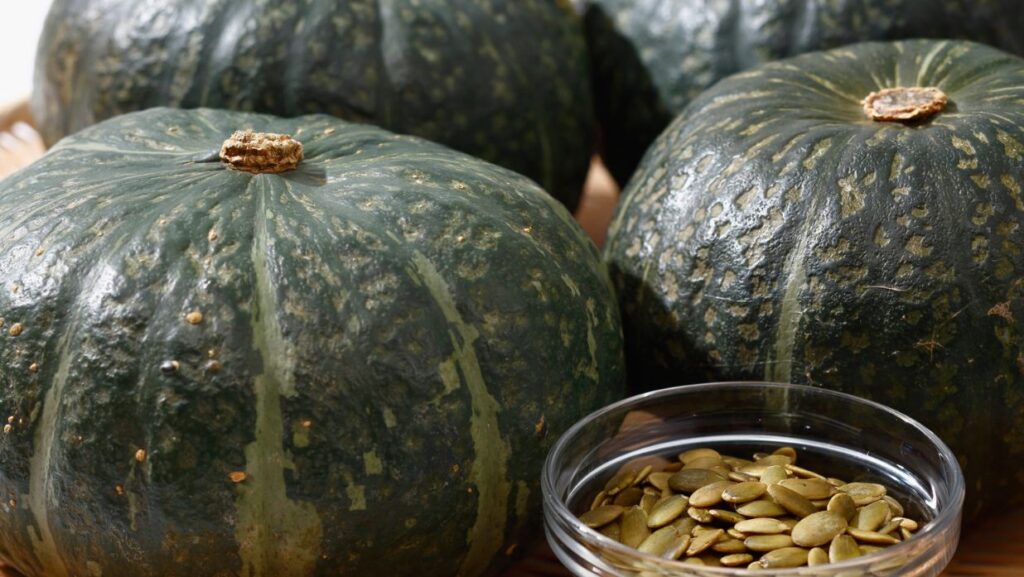
Well, it’s really no surprise that pumpkins would show up on a list of popular autumn foods in Japan! However, pumpkins, or南瓜 (kabocha), are only mildly popular in Japan. Pumpkin spice isn’t on the menu at every coffee shop, and you can’t buy pumpkin bread at many bakeries. Don’t despair, though: pumpkin-flavored drinks are starting to become more popular, but they are still a long way from being mainstream. For now, though, pumpkins can be found in soups, pies, fried up in tempura, or in a special fall curry!
Today, Japan favors soft, fluffy Western-style pumpkins, but traditional Japanese kabocha — sticky, sweet, and introduced from Portugal — still shines, especially the famous Kurokawa variety. Though fewer regions grow them now, places like Miyazaki keep the tradition alive. Greenhouse pumpkins are around December to June, while outdoor kabocha peaks in October and November.
8. Apple (Ringo)
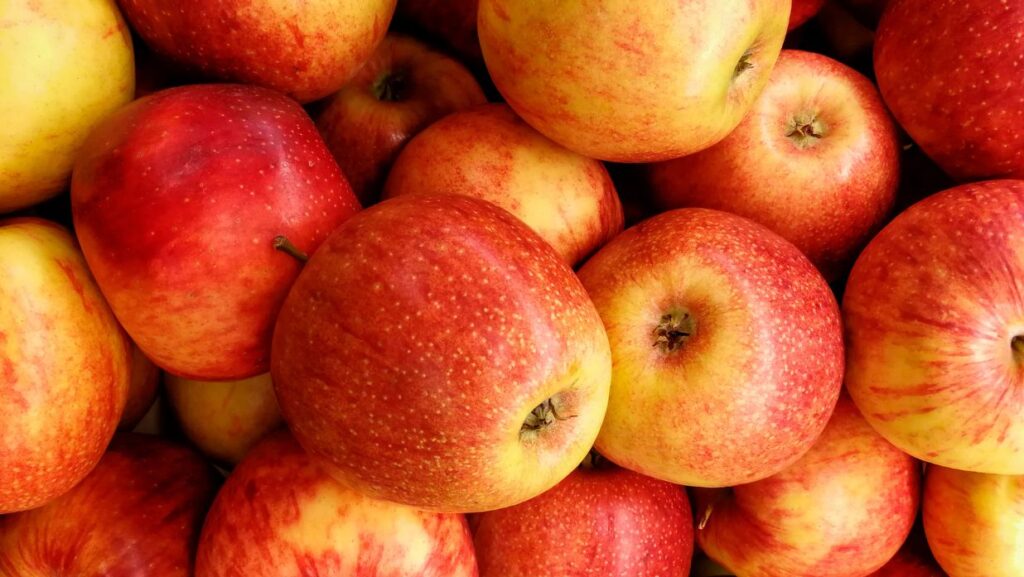
Finally, apples, or ringo (林檎) are a popular autumn food in Japan! However, apples are fairly new to the country; they didn’t appear until 1865 when the United States brought them over for the first time. Since then, they have skyrocketed in popularity, with over 2,000 different varieties being grown throughout the country! Most of these are grown in either the Aomori or Nagano prefectures, both of which are known for their apple-raising skills.
Like in many places, picking apples at an apple orchard is a popular Japanese weekend activity (from October to December). You can also pick up all sorts of apple-flavored goods from stores, such as jams, pies, Kit Kat, wine, and even vinegar!
Fun fact, the world-famous variety of Fuji apples doesn’t actually refer to Mt. Fuji, though apples are grown near there; the name actually comes from the town of Fujisaki, where the apples originally came from!
8. Grapes (Budou)
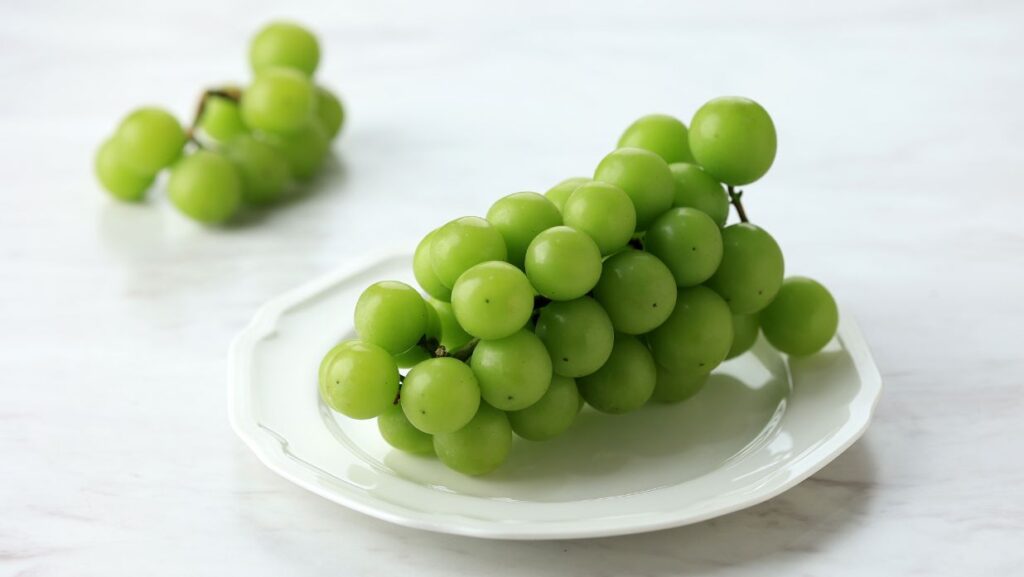
Grapes, known as budou (ぶどう) in Japanese, are also considered a seasonal fruit of autumn. Vineyard-rich regions like Yamanashi and Nagano are especially famous for their high-quality, plump varieties.
One of the most popular types is the Shine Muscat, a large, green, seedless grape that’s prized for its crisp texture and delightful muscat aroma. Shine Muscats are considered a luxury fruit, often selling for ten times the price of regular green grapes. They come into season around late August to early September.
Another beloved variety is the Kyoho grape, known for its enormous size and rich, sweet flavor.
While grapes are indeed in season during early fall and are technically an autumn food in Japan, they aren’t as strongly tied to the fall image as seasonal icons like matsutake mushrooms or satsuma-imo (Japanese sweet potatoes). This might be because fruits are often more closely associated with spring.
Still, when you spot those glossy, plump Shine Muscats in the market, autumn is the perfect time to enjoy them at their peak!
9. Shinmai Rice
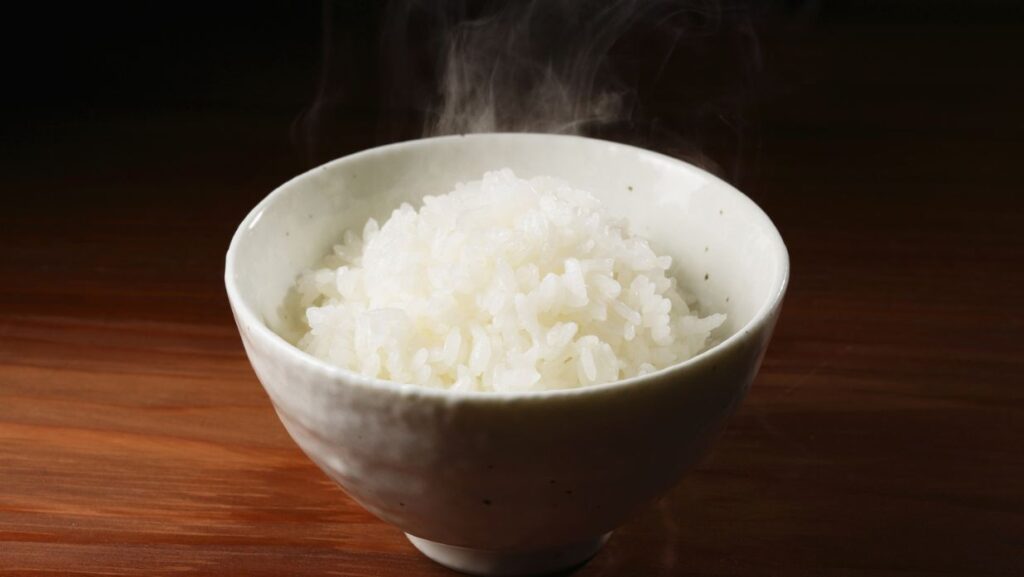
Who knew rice could also be seasonal? 新米, or shinmai rice, refers to the newest crop of rice for the year. This special type is softer and juicier than other kinds of rice, but you have to act quickly; shinmai rice is only available from September to November. This is because the grains have to be processed, shipped, and consumed all within the same year to preserve their unique taste. While maybe not as exciting as other food choices, shinmai rice would go well with some of the other seasonal flavors we discussed!
Like any well-harvested ingredient, shinmai rice should be enjoyed in its most pared-back form: in a bowl, freshly steamed. Try them with tempura (try kabocha tempura while you are at it), drizzle a bit of the sweet tare sauce, or pair them with your favorite sashimi and enjoy the different pleasant textures to welcome Japan’s coziest season.
10. Black Sesame Seeds (Kuro Goma)
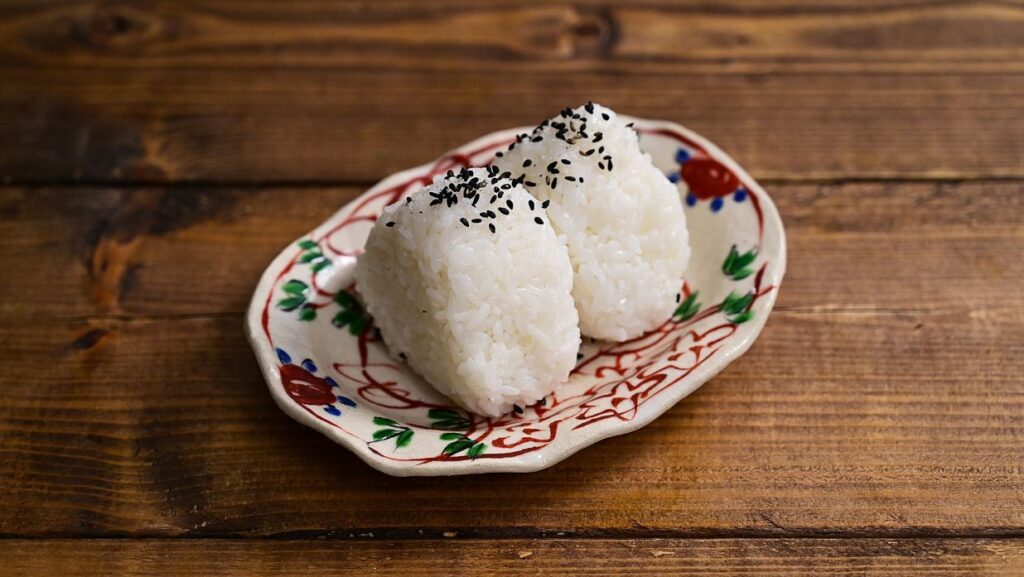
Black sesame seeds, or黒ごま (kuro goma), are a popular flavor year-round, but interest in them tends to pick up during the fall. This is when the seeds are traditionally harvested, and their nutty flavor goes well with other autumnal foods. By itself, black sesame seeds are used in sesame-flavored ice cream and parfaits, which then get the added bonus of turning a spooky black or grey color!
11. Hojicha
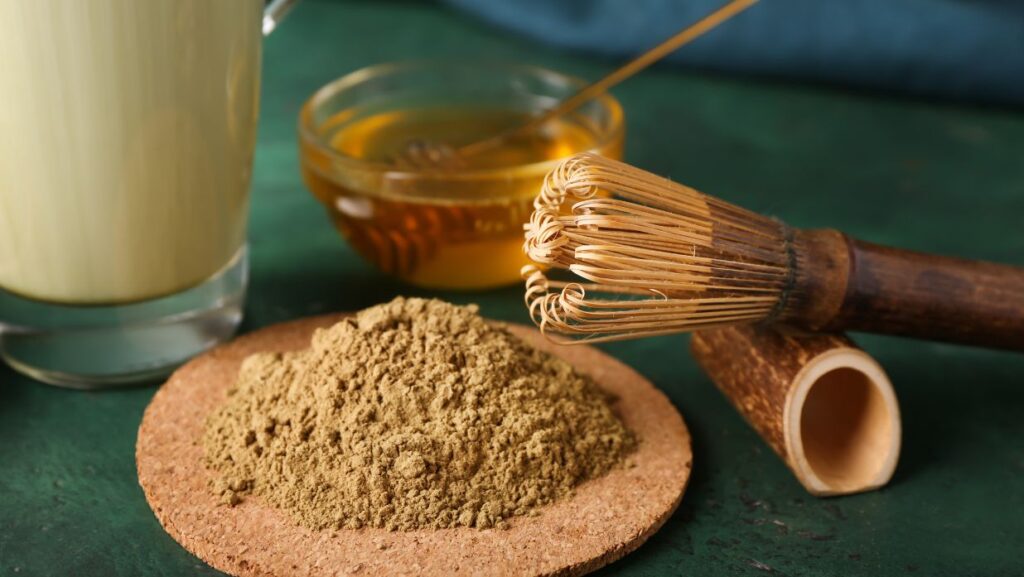
Hojicha (ほうじ茶), or roasted green tea, is a flavor that is also available year-round but picks up popularity in the fall; this is due to its nutty and smoky flavors. Like its close cousin matcha, hojicha can be added to a variety of foods, such as cakes, lattes, candies, and more! (If you’d like to learn more about different types of Japanese tea, you can check out our article about that exact topic here.)
12. Japanese Pear (Nashi)
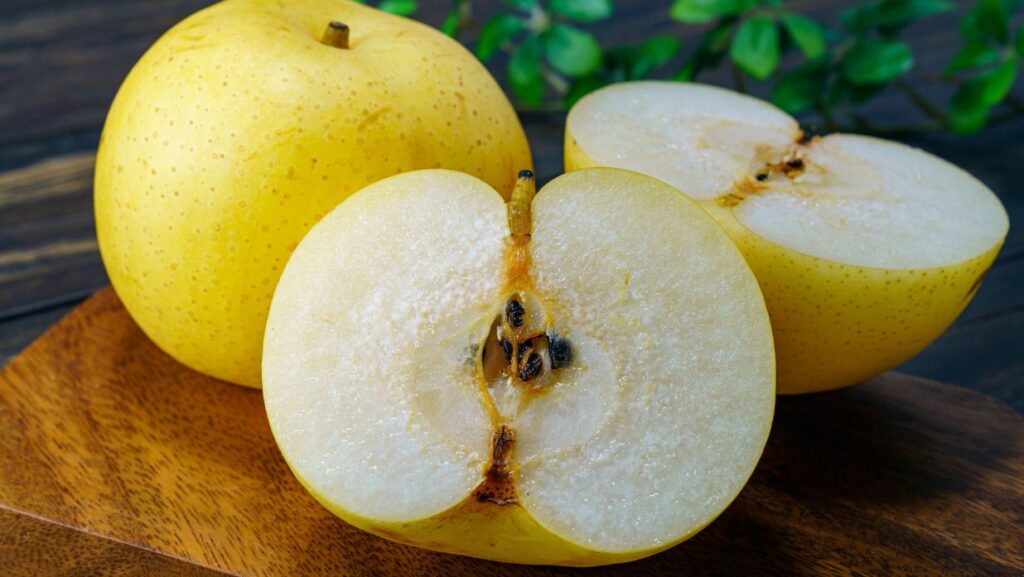
Forget everything you know about pears, because the Japanese pear, or nashi, is in a class of its own. Also known as the Asian pear and native to East Asia, nashi stands out with its larger, round, apple-like shape, crisp texture, and refreshing juiciness. Unlike Western pears that soften as they ripen, nashi pears are best enjoyed firm, offering a sweet, crunchy, and thirst-quenching bite every time.
In Japan, popular varieties include the reddish-brown Kosui, celebrated for its rich sweetness, and the abundant Hosui, prized for its juiciness. The season stretches from August to November, with peak flavor arriving from late August through October.
Beloved for their delicate balance of sweetness and gentle tartness, nashi pears shine both fresh and in the kitchen. Slice them into salads for a crisp crunch, pair them with desserts for a natural burst of sweetness, or simply savor them on their own.
13. Oden
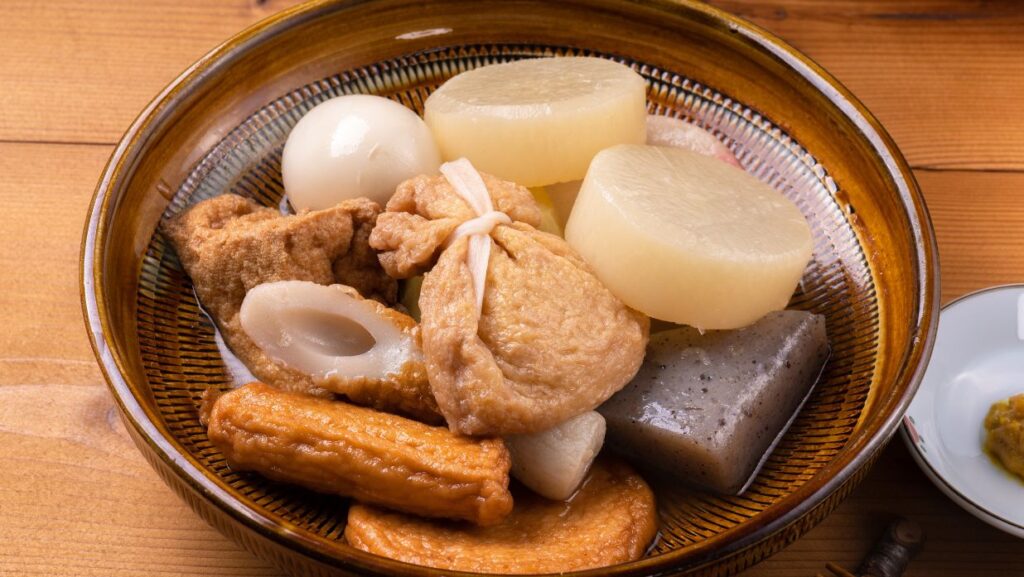
Few foods capture the feeling of crisp evenings and the comfort of warmth quite like oden. Oden may not be tied exclusively to autumn, but it’s one of those Japanese comfort foods that truly comes alive when the seasons change and the nights grow cooler.
At its heart, oden is a simmering pot of dashi-based broth, often made from a delicate combination of fish and seaweed stock, into which a variety of ingredients are gently cooked until they soak up all the savory flavor.
The lineup of oden ingredients can vary, but classics include tender daikon radish, chewy konyaku, soft-boiled eggs, fried tofu, and an assortment of fish cakes.
You’ll often find steaming pots of oden at convenience stores, izakayas, and food stalls. It’s hearty yet light, nourishing yet deeply satisfying, often enjoyed over a glass of namabiiru (Japanese draft beer).
14. Nihonshu (Japanese Sake)
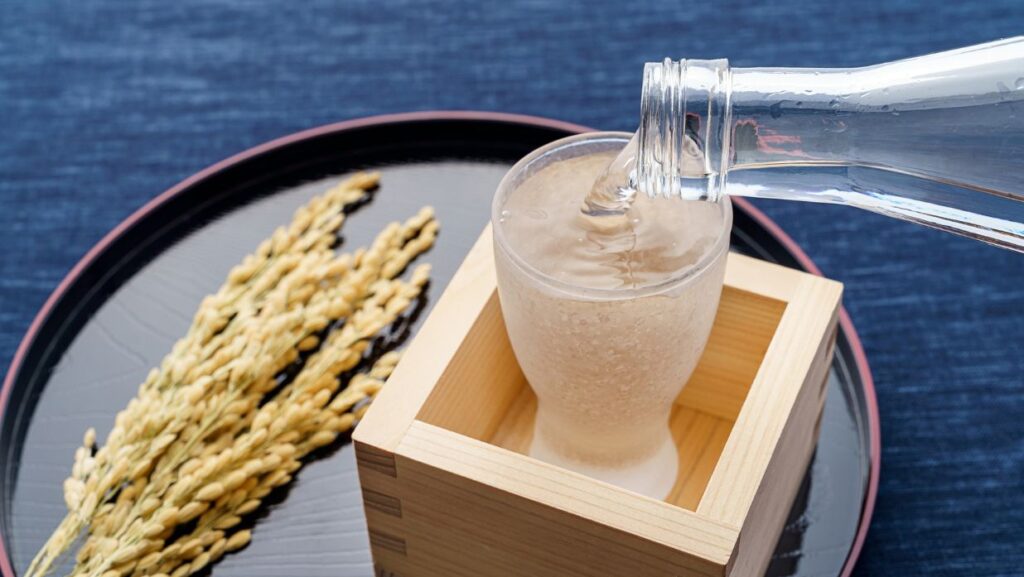
We have talked about autumn foods in Japan, but what about the drinks? In Japan, the brewing of sake, a traditional drink made from fermented rice, water, and koji, is closely tied to the changing seasons, and autumn holds a special place for enthusiasts.
This is when breweries release hiyaoroshi, a seasonal sake that is brewed in the spring and aged over the summer. Unlike freshly brewed spring sake, hiyaoroshi is smoother, milder, and perfectly suited to the cooler autumn months, making it a popular choice for gatherings, festivals, and cozy evenings.
Hiyaoroshi pairs beautifully with seasonal ingredients such as mushrooms, chestnuts, and pumpkin. Cooking with a touch of miso or soy sauce enhances the umami flavors, which the sake then complements and elevates.
15. Lotus Root (Renkon)
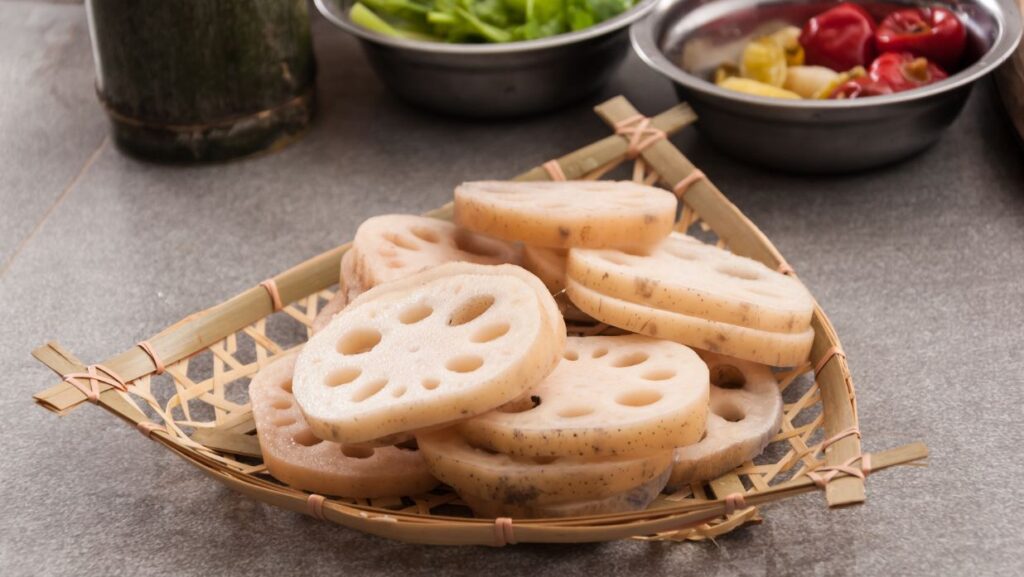
Lotus root is a versatile and nutritious vegetable with a long harvest season, spanning from July to March, and reaching its peak in the fall. Its texture and flavor change with the seasons: summer lotus root is semi-translucent, juicy, and tender, while winter lotus root turns milky white, with a soft, flaky texture.
In the fall, lotus root can be cooked in almost any way, as it is at its most versatile. One particularly delightful dish is lotus root chips, where you boil the roots with their skin at a low temperature, slice them thinly into rounds using a vegetable slicer, and deep-fry them until crisp.
Where You Can Try Autumn Foods in Japan
Well, now that we’ve tempted you with all of these delectable food descriptions, it wouldn’t be right to end without telling you how you can try some of these flavors for yourself!
If you’re in Japan, then it’s pretty easy to find these foods; simply go to your local grocery store or konbini, and you are sure to find seasonal foods galore! This is also when Japanese snack producers start showing off their creativity; you might find pumpkin Kit Kat or fall-inspired Pocky flavors.
Plenty of food chains, such as Krispy Kreme or Starbucks, also have seasonal menus that include many of the flavors we discussed above. For example, Starbucks likes to put out time-limited, fall-inspired drinks like the sweet potato latte or Japanese pear frappuccino.
You can find many of the more traditional offerings at places like izakayas and special festival stalls. If you’re up for some travel, you can also go to areas known for specific foods, such as Aomori Prefecture for apples or Obuse City for chestnuts!
If you’re not in Japan, it’s still not too hard to try these flavors! For one thing, many of the foods we mentioned (sweet potatoes, apples, chestnuts) are available all over the world; you can simply check at your local supermarket to see if you can get them there. This would be a fun way to try the flavors while also making some Japanese recipes! Alternatively, you can always check online at sites such as Amazon to see if there are any seasonal Japanese snacks available!
Conclusion
After every filling meal comes a time of contentment. Your stomach is warm, your taste buds are happy, and you’re left with the memory of a good time. Hopefully, our list of tasty Japanese autumn foods was enough to satisfy any hunger you came here with.
Or not! Maybe now you have a new hunger and want to keep exploring all the wonderful fall dishes that Japan has to offer! There’s always something new to discover about Japanese cuisine, and seasonal foods are no exception.
So, zip up your coat, put your scarf on, and head out the door; there’s too much to love about autumnal foods to wait any longer!
Learn Beyond Japanese Autumn Foods and Speak Japanese with Lessons at Coto Academy!
Now that you’ve learned the basics of talking about the autumn in Japanese, why stop there? There are plenty of other essential skills to master, like introducing yourself or discussing a specific topic in conversation.
If you want to build confidence and start speaking Japanese, consider joining conversation-focused Japanese lessons at Coto Academy. As a top-rated school with campuses in Tokyo and Yokohama, we offer fun and flexible lessons designed around practical, everyday conversation. You’ll learn Japanese that you can use immediately outside the classroom.
We offer intensive Japanese courses as well as part-time options, so whether you want to immerse yourself fully or fit lessons into a busy schedule, there’s something for you. Start your journey to speaking Japanese confidently today!
Why join Coto Academy?
- Over 60+ different Japanese classes over 18 levels
- Small classroom of only up to 8 students for personalized support
- Professional, native Japanese teachers
Ready to get started? Fill out the form below to contact us!
FAQ
What are the seasonal flavors in the fall?
Chestnut, sweet potato, pumpkin, mushroom, and persimmon are classic autumn flavors.
How popular is pumpkin spice in Japan?
Actually, it’s not popular at all! While it is gaining some fans, pumpkin spice and pumpkin flavoring aren’t widespread in Japan. You are most likely to find pumpkin added to curries, stews, and fried in tempura instead!
What do Japanese eat during autumn?
Japanese enjoy kabocha, matsutake mushrooms, sanma (Pacific saury), chestnuts, and sweet potatoes in autumn.
What are traditional fall foods? T
Traditional fall foods feature mushrooms, pumpkin, chestnuts, fish like sanma, and rice-based dishes.
What to eat in Japan in October?
Seasonal treats in October include grilled sanma, roasted chestnuts, pumpkin dishes, and sweet potato desserts.
Visiting Japan this autumn? You might be interested in reading:
